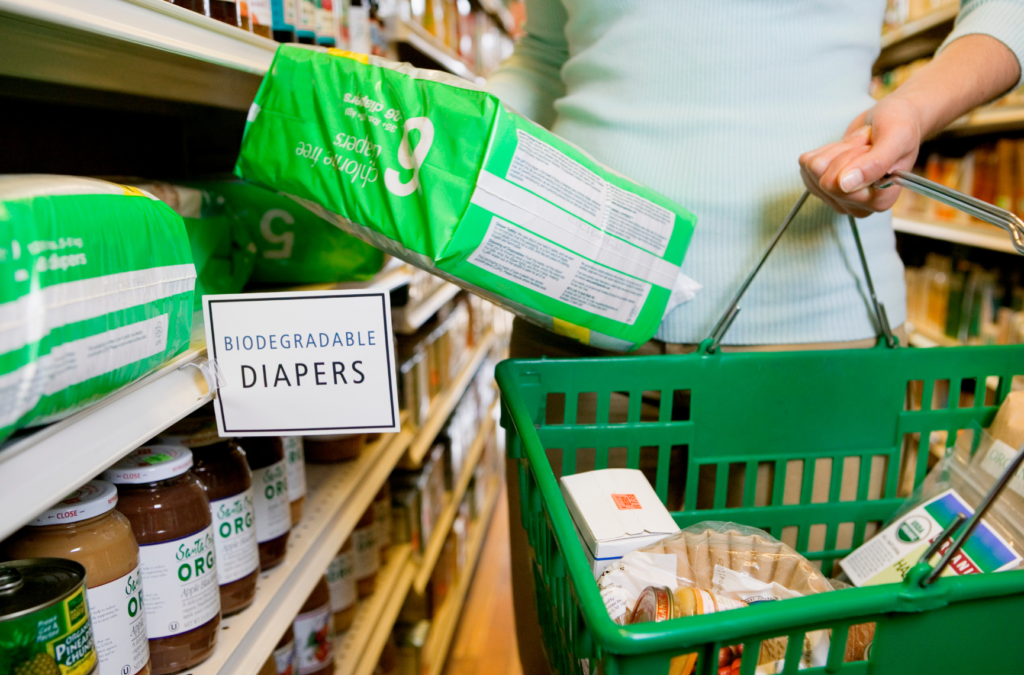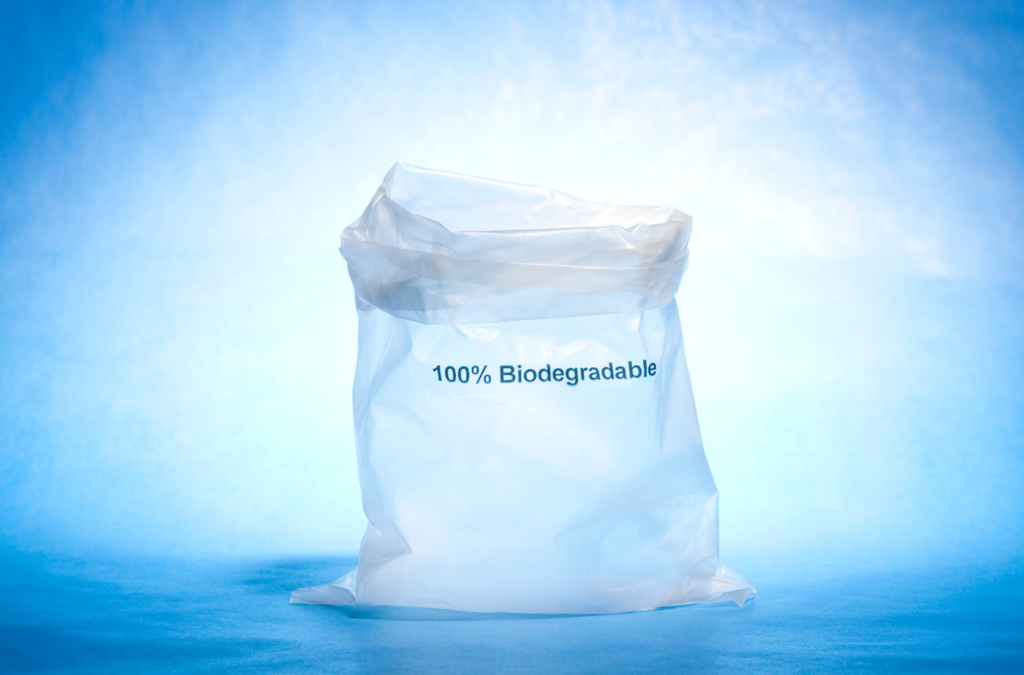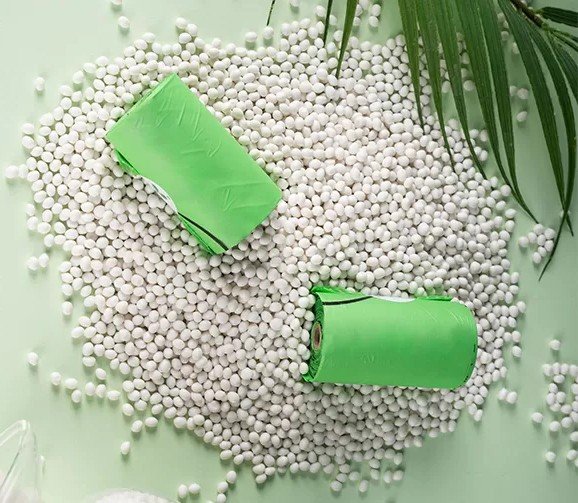Degradable vs. Biodegradable Plastic
What Are The Differences?
Table of contents :
- Degradable vs. Biodegradable Plastic: Key Differences
- Example of Each Type
- Which Plastic Should You Choose?
- Conclusion
- About Bajaj Plast’ Bioplastics
Degradable and biodegradable plastics are crucial in modern manufacturing, yet they impact the environment in distinct ways. Both contribute significantly to advancements in waste management and eco-friendly production. However, to maximize their benefits, manufacturers must evaluate various factors carefully. Understanding the key differences, unique properties, and selection criteria between degradable and biodegradable plastics remains a top priority for many industries. Dive into the insights below for a deeper understanding of these two innovative material solutions!
1. Degradable vs. Biodegradable Plastic: Key Differences

Degradable and biodegradable plastics are fundamental classifications in the pursuit of sustainable material solutions. These polymeric materials exhibit distinct degradation mechanisms and environmental interactions. While both serve as alternatives to conventional plastics, their decomposition pathways, chemical structures, and ecological impacts differ significantly. This analysis explores the critical distinctions in defining these two polymer categories, highlighting their degradation kinetics, molecular composition, and practical applications in various industries.
1.1. Degradation process
Degradable plastics are materials that break down into smaller components when subjected to specific environmental conditions such as heat, light, or chemical additives. While they undergo degradation, they do not completely vanish or integrate into the natural ecosystem. A common example is oxo-degradable plastics, which contain additives that trigger fragmentation under UV exposure, ultimately leaving behind microplastic residues after decomposition.
On the other hand, biodegradable plastics decompose efficiently in the presence of microorganisms, breaking down into natural byproducts like water, carbon dioxide, and biomass. Unlike degradable plastics, they do not leave harmful residues in the environment. A well-known example is polylactic acid (PLA), which is widely used in the production of biodegradable packaging due to its eco-friendly properties.
1.2. Environmental impact
The environmental impact of these materials is a key concern when discussing degradable vs biodegradable plastics. For degradable, they help reduce physical waste, easing congestion in landfills. However, they carry a potential risk, which is the problem of microplastic pollution.
On the contrary, biodegradable is more valued for its environmental friendliness. They have the outstanding advantage of being completely degradable through treatment processes such as composting. We can easily come across eating utensils such as knives, spoons, and forks made from starch-based plastic that can decompose well in the current waste treatment process.
1.3. Degradation conditions
Both degradable vs biodegradable plastics are degradable, but they also require specific conditions to start decomposing.
Degradable plastics have a degradation process that requires external factors such as UV light, heat or some other chemicals. Their degradation will take longer (even years) if they exist in a sheltered environment or in places that are not directly exposed to the above challenges.
Biodegradable plastics are said to have more specific environmental requirements for their degradation. Products made from this material need to be processed in home composters and also industrial scale composting. Furthermore, they are also quite dependent on the activity of microorganisms under certain environmental conditions of temperature and humidity.
1.4. Degradation timeline
Both degradable vs biodegradable plastics require a certain amount of time to complete their decomposition process. The time it takes for this process to occur will depend on a number of factors.
Degradable plastics may take several years to fully decompose in natural environments. How quickly they decompose will depend on the conditions at the time. Of course, if there is a treatment effect from factories, they will decompose many times faster.
Biodegradable plastics have a much shorter decomposition time. They typically require a few weeks to a few months to fully decompose under ideal conditions. For example, starch-based plastics can decompose within 90 days under industrial composting conditions.
1.5. Common applications
Degradable vs biodegradable plastics are both widely used in many applications in human life today. Each type will have its own advantages in some specific applications thanks to its own properties.
Common applications of degradable plastic:
- Crop protection films: Used to cover crops, these films decompose in sunlight, reducing the need for manual removal.
- Disposable cutlery: Lightweight and designed for single use, these items will break into smaller pieces after disposal.
- Packaging materials: Biodegradable films and wraps protect goods during transportation and decompose after disposal.
- Garbage bags: Designed for short-term use, these bags will decompose when exposed to environmental conditions.
- Sewing thread: Items such as biodegradable sewing thread are used temporarily and decompose under controlled conditions after use.
Common applications of biodegradable plastics:
- Tableware: Plates, cups, and utensils decompose completely in composting facilities, making them ideal for events and food service.
- Food packaging: Wrapping paper and containers made from biodegradable materials reduce waste and support environmentally friendly disposal.
- Agricultural mulches: These films enrich the soil as they biodegrade, eliminating waste from traditional plastic films.
- Biodegradable bags: Grocery and garbage bags decompose completely in composting environments, reducing the amount of waste going to landfills.
- Medical capsules: Items such as biodegradable medication capsules and sutures dissolve in the body, reducing the need for disposal.
2. Example of Each Type
Degradable vs biodegradable plastics are widely used in various areas of human production and consumption today. Each group includes a variety of different plastic lines with a variety of functions and properties. Let’s find out some typical examples of each material group right below:
2.1. Examples of Degradable Plastics

Oxo-Degradable Plastics:
Thanks to the combination of polyethylene and additives such as metal salts in oxo-degradable plastics, they can be fragmented when exposed to oxygen or UV light. In environments with direct sunlight and high UV levels, the conditions are ideal for oxo-degradable waste. This helps to quickly reduce the amount of visible waste in the environment. In addition, one of their main advantages is that they bring a positive effect on cost savings because they are easily compatible with traditional plastic product manufacturing methods without the need for complex adjustments.
Chemical-Degradable Plastics
For this type of plastic, they are designed to decompose when exposed to specific chemical agents, such as acids, alkalis, or other solvents. Many industries utilize this property to precisely calibrate the decomposition time in production processes. Their unique advantage is that they possess flexible customization capabilities that allow manufacturers to predict and control the decomposition process. This makes chemical-degradable plastics considered one of the ideal solutions for waste management in today’s industries.
Photodegradable Plastics
This material line is a product that is specifically geared towards degrading in direct sunlight. The radiation and heat from the sun will break down their molecular structure, causing them to disperse into small pieces over time. Because of this special property, they are especially effective for outdoor applications. For example, fruit or tree cover films will decompose after harvest. The advantage of this material line is that they make optimal use of the natural energy source, which is the sun, which helps save investment costs in waste treatment equipment. Besides, they also contribute to reducing outdoor waste, helping to save human cleaning efforts.
Heat-Degradable Plastics
The decomposition process of this type of material can be carried out by heating. This is also a type of plastic that allows manufacturers to predict and control the waste treatment process well. In particular, the thermal decomposition process is quite fast, so it brings significant efficiency in terms of time. One of the convenient applications of this material line is thermally degradable waste bags, or agricultural fertilizer packaging to meet the needs of mass production and easy disposal of waste after use.
Blended Degradable Plastics
One of the optimal advantages of this material line is the combination of many decomposition mechanisms such as ultraviolet sensitivity and oxygen exposure, which helps to improve the flexibility in their decomposition process. They provide good decomposition ability in many different environmental conditions thanks to their low dependence on certain environmental conditions. Not relying too much on any decomposition trigger has helped them achieve a balance between performance and cost efficiency for many manufacturing industries.
2.2. Examples of Biodegradable Plastics

Polylactic Acid (PLA)
One of the typical examples of biodegradable plastics is Polylactic Acid (PLA). They are a line of green plastic materials derived from renewable resources such as corn starch, sugarcane or cassava. PLA brings significant benefits to the environment by being able to completely decompose into carbon dioxide, water and biomass in a period of a few weeks. One major advantage of PLA is its safety—it does not release toxins when in contact with food and decomposes without leaving harmful residues. We can easily come across PLA food packaging applications where high consumer demand leads to the need for mass production. Thanks to their excellent degradability, they are always the ideal choice in the development of sustainable materials.
Polyhydroxyalkanoates (PHA)
The main ingredient of this biodegradable plastics line is natural starch such as cornstarch, or potato starch combined with some other biodegradable polymers to increase durability. They are extremely effective in significantly reducing the amount of waste in landfills thanks to their ability to decompose quickly in a composting environment. This material line shows excellent compatibility with both home and industrial composting systems, bringing significant cost efficiency to many different scales. Many of their applications are widely applied every day such as grocery bags, food packaging and a variety of designs for disposable items.
Starch-Based Plastics
This material line is a product that is specifically geared towards degrading in direct sunlight. The radiation and heat from the sun will break down their molecular structure, causing them to disperse into small pieces over time. Because of this special property, they are especially effective for outdoor applications. For example, fruit or tree cover films will decompose after harvest. The advantage of this material line is that they make optimal use of the natural energy source, which is the sun, which helps save investment costs in waste treatment equipment. Besides, they also contribute to reducing outdoor waste, helping to save human cleaning efforts.
Cellulose-Based Plastics
Wood pulp or cotton will be the main source of cellulose for this material line. Products from them can be completely reused and biodegradable. Their decomposition process will take place effectively under common composting conditions and will not leave toxic residues in the environment. This is considered one of the sustainable solutions for the growing needs of the packaging industry thanks to its durability and environmental friendliness. Moreover, packaging and wrapping made from cellulose-based plastics possess high transparency, so they are the optimal choice for displaying and displaying the products contained inside the packaging.
Polycaprolactone (PCL)
For PCL, they are a synthetic polymer line that is rapidly biodegradable with a not too high heat resistance. PCL decomposition is not too complicated and can be completely adjusted and controlled easily. Their main advantage lies in their ability to safely dissolve in the body over time. Thanks to this optimal property, many advanced medical applications today have effectively exploited PCL, such as drug and nutrient delivery devices for patients, tissue scaffolds and some implant devices. It can be seen that this material line is extremely useful in the current healthcare field.
3. Which Plastic Should You Choose?
Both degradable vs biodegradable plastics can be composted, but they require different conditions. Considering a few specific factors before choosing between degradable vs biodegradable plastics can bring great benefits to your project. Here are some typical solutions to make your choice easier:

3.1. Application Considerations
- Degradable Plastics: Ideal when used for temporary purposes within the scope of packaging, agricultural films, or single-use items. Degradable plastics can be more effective for breaking down visibly faster than traditional plastics if your product will remain exposed to sunlight, heat, or oxygen over its lifecycle.
- Biodegradable Plastics: For applications where plastics are likely to find their way into the natural environment or composting systems such as food packaging, medical-grade products, or disposable tableware. If your product fits within industries concerned with sustainability, biodegradable plastics carry a little more environmental cachet.
3.2. Assess Disposal Infrastructure
- Degradable Plastics: In areas where proper composting systems do not exist, degradable plastics manage visible litter by fragmenting at a faster rate, especially in outdoor environments where exposure to sunlight and oxygen is pretty common.
- Biodegradable plastics: The materials like PLA or PHA are the best for regions with industrial facilities for composting. They decompose into harmless byproducts hence reducing long term solid waste.

4. Conclusion
In conclusion, degradable vs biodegradable plastics are highly appreciated for their strong contribution to improving and solving the problems of plastic waste and environmental pollution. In particular, degradable plastics provide an optimal solution in waste treatment, bringing great benefits in reducing tangible waste. Besides, biodegradable plastics allow materials to decompose completely without leaving toxic residues, ensuring high safety for human and animal health.
To choose the right material line between degradable vs biodegradable plastics, it is necessary to carefully consider factors such as application, available treatment systems and environmental priorities. With the continuous advances in technology today, it shows a good sign of increasingly improving and enhancing their performance as well as their applicability for a more sustainable and green production in the future.
About Bajaj Polyblends Pvt. Ltd.
Bajaj Polyblends Pvt. Ltd. is a leading manufacturer of high-quality masterbatch solutions, dedicated to innovation, sustainability, and excellence. With a strong focus on customer satisfaction and cutting-edge technology, we are committed to delivering superior products that meet the evolving needs of the polymer industry.



